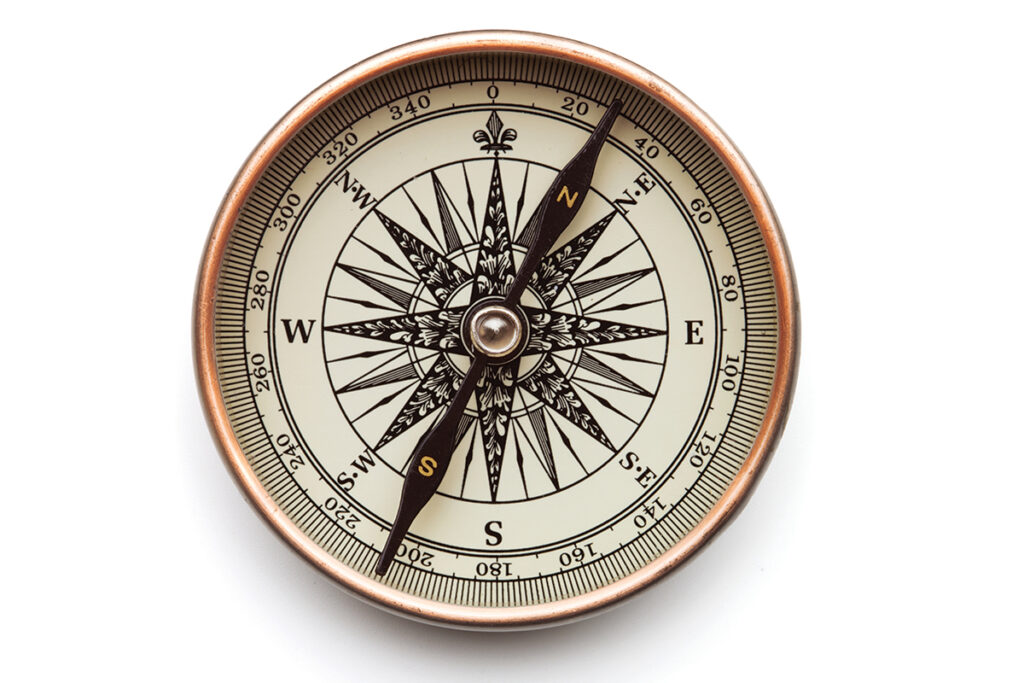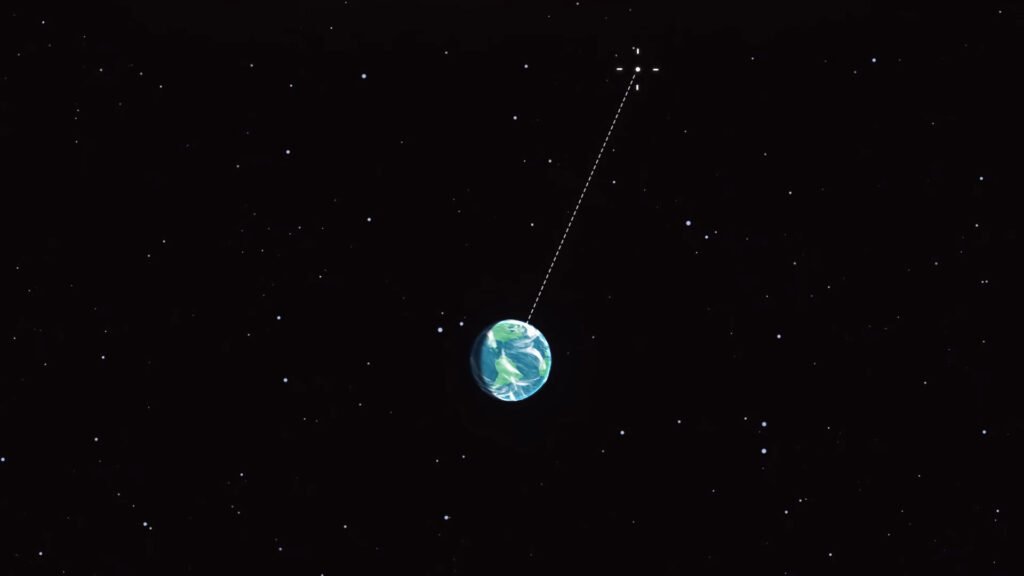
Have you ever used an official map, including topographic maps, for hunting or backcountry trips? Did you see what appeared to be a sophisticated series of arrows pointing north? Typically, the map includes both vertical and horizontal grid lines. Understanding the link between the several North arrows and how to utilize your compass with these arrows is essential for reaching your destination.
So, let’s look at the difference between True North and Magnetic North!
What is True North?

It is also called the Geographical north. True north is the direction that leads directly to the North Pole. This is a fixed location on the globe of Earth.
The Earth spins around its geographic north and south poles. Lines of longitude (meridians) converge at the northern hemisphere’s geographic north and south poles. The south and north pole are directly opposite to one another.
The North Pole is situated within the Arctic Ocean. Several attempts have been made by scientists to identify the North Pole. But creating a stationary outpost at the geographic North Pole is quite unlikely due to the constant sea ice movement in the area.
The South Pole is located in Antarctica, a massive continent on the other side of the planet. The United States Antarctica program has placed a marker here to restrict the genuine South Pole since the ice cap moves only a few meters yearly.
What is the Magnetic North?
Magnetic north is where the Earth’s magnetic field points downward vertically. The direction of magnetic north varies throughout time and across the surface of the Earth.
The Earth is an enormous magnet. The Magnetic North Pole, also known as the North Dip Pole, is located on Ellesmere Island in Northern Canada, where the northern lines of attraction enter the Earth’s surface.
A compass needle floats freely within its casing, allowing it to move independently. When you bring out a compass, it aligns with the Earth’s magnetic field. The little magnetic pin allows a compass to respond to the magnetism of the Earth.
Thus, a compass needle will point to the Magnetic North Pole, which differs from the geographic north.
Where are the Magnetic North and Geographic North?

Question: Where would a compass needle point if you were standing on the true North Pole?
If you were standing on the geographic north pole while holding a compass, it would point to Ellesmere Island in northern Canada. The distance between the Geographic North and Magnetic North poles is around 500 kilometers!
This distinction is known as magnetic inclination. Magnetic deviation is the compass needle’s inaccuracy when surrounding metallic objects are considered.
The magnetic inclination changes depending on your location on the planet. Using declination charts or local calibration, users may correct for the magnetic inclination to aim in the appropriate direction.
Today’s difference is around 500 kilometers. However, the Magnetic North Pole moves kilometers annually. The term for this phenomenon is Polar Shift Theory.
How to Find True North
There are many ways to find the True North. In this article, we will discuss the major ways which include using navigation tools, the sun or moon, and stars during the night.
Finding True North With Navigation Tools

One of the simplest ways to find true north is with a Global Positioning System (GPS). A GPS determines your location by combining the coordinates given by many Earth-orbiting satellites. If you have a GPS or a smartphone with a mapping app, you may choose a “true north” setting.
Compass functionality is also available on almost all cell phones. You may also get free compass programs for your phone from the internet. But let’s look at the compass for a more conventional navigation method.
To locate true north, you need to know your local declination value or the previously described angle between true north and magnetic north. You may access such information online at official sources, like the National Centers for Environmental Information, or it will be stated in your map’s legend (formerly the National Geophysical Data Center).
A few methods may be used to set your compass to true north. Whether you are east or west of the agonic line, you can tell if the declination number is positive or negative. When you are west of the line, you spin the ring counterclockwise; when you are east of the line, you turn the ring clockwise.
Finding True North With the Sun

The simplest way to determine your direction if you are lost during the day without a map, compass, or GPS is to look skyward. The sun’s movement can illuminate your path to the true north. However, you must keep in mind a few crucial details to apply this solar tutorial.
The sun always rises in the east and sets in the west in the Northern Hemisphere. It dominates the middle of the horizon to the south at midday. That implies that when the sun is at its zenith, traveling exactly in its direction will lead you south. You travel north when the sun is on your back as you walk. In the Southern Hemisphere, the reverse is accurate.
An analog watch with minute and hour arms can act as a replacement compass if it is not noon and you need to find your way during the day. Check first that the watch is showing the right time. Point the hour arm at the sun at that point.
While holding the watch in place, visualize an angle created by the hour hand and a line running from the center of the watch to the 12 o’clock position. Then, make an illustrative line that cuts through that angle. That line indicates the Northern Hemisphere’s south. Create the angle during daylight saving time by starting at one o’clock rather than twelve.
Instead of pointing the hour hand at the sun in the Southern Hemisphere, point the 12 at it. Next, draw an angle between the hour arm and a line that runs from the number 12 to the watch’s center. That angle is represented by the line that cuts it.
Finding True North With the Moon and Stars

The moon and stars may illuminate the true north after sunset.
The Special Air Service Survival Guide suggests following a waxing or declining moon, the West is bright if the moon rises before sunset. It illuminates the east after midnight. Knowing one route simplifies the rest.
Remember to understand why the sun moves east to west on our horizon. We also know that the moon revolves around Earth, and how much we see depends on the sun’s brightness. The moon disappears between Earth and the sun.
The waxing moon initially appears in the west at sunset as its 28-day circular orbit progresses. After midnight, the moon becomes visible after waning and reaching the other side of Earth. Eastern sunshine illuminates it, then.
Use stars for direction if the moon isn’t visible. In the Northern Hemisphere, Polaris points north. The Big and Little Dipper constellations help you discover Polaris. Draw an imaginary line from the two “pointer stars” at the base of the Big Dipper bowl to the absolute and brightest star in the Little Dipper handle. Polaris is Cassiopeia’s middle star.
How Do Magnetic north and True north align?
Magnetic north and geographic north align when the angle of declination, the difference between the two norths at a certain place, is 0°. The angle between magnetic north and geographic north is known as declination. It varies with the passage of time and place.
Lines with zero declination on a map of the Earth are referred to as agonic lines. Depending on how the Earth’s magnetic field changes over time, agonic lines travel differently.
In some areas of Western Australia, zero declination is happening; in the years to come, it will probably travel westward.
Frequently Asked Questions
Does GPS use true north or magnetic north?
GPS receivers usually utilize true north, although some are designed to determine magnetic north using data tables and the device’s interpretation of the genuine position. The equipment can therefore calculate the direction and position of the North Pole (only if the GPS has a setting for magnetic compass readings).
How do you find true north on a compass?
Because the compass needle is aligned with the Earth’s magnetic field, the compass needle often points to the magnetic north. The needle must be manually adjusted to account for declination to locate true north.
How far off is magnetic north from true north?
The distance between magnetic north and true north is around 500 kilometers (310.6 miles). The North Pole, often known as the true north, is formed where longitudinal lines intersect. On the other hand, the magnetic north is a region in Northern Canada that is constantly shifting because of the activity of the planet’s magnetic fields.
Should I use magnetic or true north?
True north is more significant than magnetic north. The primary reason for this is that magnetic north is never a permanent place owing to changes in the Earth’s core throughout time.
What direction is true north?
True north, also referred to as geographic north, is the direction that points towards the North Pole, a fixed global point.




